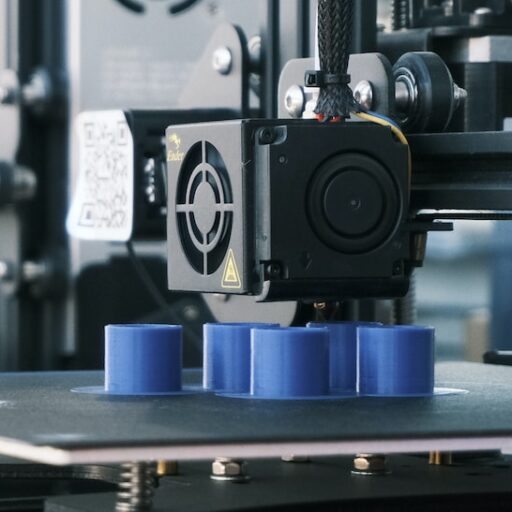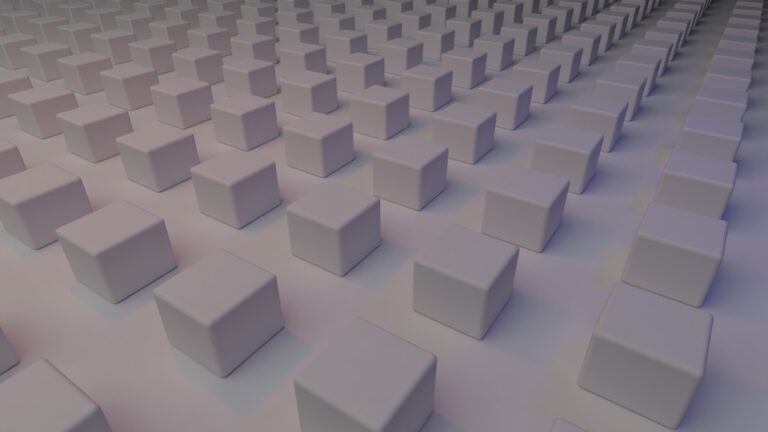Support our educational content for free when you purchase through links on our site. Learn more
What Are the 27 Most Valuable 3D Printed Objects? 💎 (2025)
Imagine holding a chess set where every piece tells a story of political rivalry, or wearing an Iron Man suit crafted layer by layer in your own home. What if that same technology could print life-saving prosthetics or aerospace parts that defy traditional manufacturing limits? Welcome to the dazzling world of the most valuable 3D printed objects—where innovation meets artistry, utility, and sometimes jaw-dropping price tags.
In this article, we dive deep into 27 of the most valuable 3D printed creations that span from medical marvels to collectible miniatures, cosplay masterpieces, and beyond. Whether you’re a hobbyist, entrepreneur, or curious tech enthusiast, you’ll discover what makes these objects so prized, how material choice and design complexity drive their worth, and how you can tap into this booming frontier yourself. Ready to uncover the secrets behind these digital treasures? Let’s print some value!
Key Takeaways
- Value goes beyond price: It’s about innovation, customization, and solving real-world problems.
- Top valuable objects include: medical devices, aerospace parts, bespoke jewelry, cosplay props like the Iron Man suit, and ultra-detailed miniatures.
- Material and design complexity heavily influence an object’s worth and market appeal.
- Mastering advanced printing techniques and marketing are essential to maximize your 3D print’s value.
- Explore platforms like Thingiverse, Gambody, and MyMiniFactory for inspiration and ready-to-print models.
👉 Shop 3D Printed Masterpieces on:
Table of Contents
- ⚡️ Quick Tips and Facts
- 🚀 The Genesis of Value: How 3D Printing Transforms Worth
- 💰 Defining “Valuable”: More Than Just a Price Tag!
- 💎 The Pinnacle of Profit & Purpose: Our Top 25+ Most Valuable 3D Printed Objects!
- 📈 Factors Influencing the Value of 3D Printed Objects
- 🛠️ How to Identify & Create High-Value 3D Prints
- ⚠️ Common Pitfalls to Avoid When Chasing Value
- 🔮 The Future of Valuable 3D Printed Objects: What’s Next?
- 💡 Quick Tips for Maximizing Your 3D Print Value
- 🏁 Conclusion: The True Worth of 3D Printing
- 🔗 Recommended Links for Further Exploration
- ❓ FAQ: Your Burning Questions Answered!
- 📚 Reference Links
Quick Tips and Facts
To get started with understanding the value of 3D printed objects, let’s first link to a related article about What is the Most Complex 3D Printed Object? Top 10 Revealed! 🤖 2025 to explore the boundaries of 3D printing complexity.
When considering valuable 3D printed objects, it’s essential to think beyond monetary value. These objects can offer functional benefits, aesthetic appeal, and even emotional value. For instance, a custom phone case can provide protection and a personalized touch, while a 3D printed prosthetic limb can significantly improve someone’s quality of life.
Here are some key facts and tips to keep in mind:
- Customization is key: 3D printing allows for the creation of unique, tailored items that can’t be found elsewhere.
- Material matters: The choice of material can greatly impact the value of a 3D printed object, with factors like durability, sustainability, and aesthetic appeal coming into play.
- Design complexity: Intricate designs and complex geometries can increase the value of a 3D printed object, but also require more expertise and resources to produce.
- Market demand: Understanding what’s in demand and what problems need solving can help you create valuable 3D printed objects that meet real needs.
For more insights on 3D printing and its applications, visit our categories on 3D Printable Objects, 3D Printing Innovations, and 3D Design Software.
The Genesis of Value: How 3D Printing Transforms Worth
Understanding Value Creation
3D printing has the power to transform the way we perceive value. By enabling the rapid creation of complex geometries and customized products, it opens up new avenues for innovation and problem-solving.
Real-World Applications
Consider the example of custom prosthetic limbs, which can be tailored to individual needs, providing both functional and emotional value. Similarly, 3D printed jewelry can offer unique designs and personalized touches, making each piece truly special.
Defining “Valuable”: More Than Just a Price Tag!
Beyond Monetary Value
When assessing the value of 3D printed objects, it’s crucial to look beyond their monetary worth. Functional value, aesthetic appeal, and emotional significance all play a role in determining an object’s overall value.
Case Studies
For instance, a 3D printed bike accessory might offer functional benefits like improved ergonomics or aerodynamics, while a customized phone case can provide a personalized touch and protection for the device.
The Pinnacle of Profit & Purpose: Our Top 25+ Most Valuable 3D Printed Objects!
Here’s a list of some of the most valuable 3D printed objects, considering factors like functionality, uniqueness, and market demand:
- Life-Saving Medical Devices & Prosthetics: Customized prosthetic limbs, implants, and surgical guides that improve patients’ lives.
- Custom Surgical Guides & Anatomical Models: Precise models for surgical planning and education, enhancing patient outcomes and medical understanding.
- Aerospace & Automotive End-Use Parts: Lightweight, complex components for aircraft and vehicles, contributing to efficiency and safety.
- High-Performance Industrial Tooling, Jigs, & Fixtures: Customized tools for manufacturing, reducing production time and increasing precision.
- Bespoke Jewelry & Wearable Art: Unique, intricate designs that combine fashion and technology.
- Architectural Models & Urban Planning Aids: Detailed models for architects and planners, facilitating design and communication.
- Movie-Quality Cosplay & Prop Replicas (e.g., Iron Man Suit, Halo Pistol): Intricate, detailed replicas for film enthusiasts and cosplayers.
- Ultra-Detailed Wargaming Miniatures & Collectibles (e.g., Sharkmech, Dwarf-Warrior): Customized figures for gaming and collecting, offering unique designs and precision.
- Unique Art Installations & Sculptures (e.g., Frosted Donut Holed, Spinner): Large-scale, complex artworks that push the boundaries of 3D printing.
- Customized Ergonomic Tools & Grips: Tailored tools for improved comfort and efficiency, reducing fatigue and injury.
- Functional Prototypes for Product Development: Rapidly created prototypes for testing and refinement, accelerating product development.
- Replacement Parts for Obsolete Machinery: Customized parts for extending the life of equipment, reducing waste and costs.
- Educational Aids & Scientific Research Models: Interactive models for education and research, enhancing understanding and discovery.
- Personalized Home Decor & Furniture Components: Customized items for unique interiors, combining functionality and aesthetics.
- Customized Musical Instrument Parts: Tailored components for musicians, offering improved performance and sound quality.
- Specialized Camera Gear & Accessories: Customized equipment for photographers, providing unique perspectives and capabilities.
- Robotics Components & Drone Parts: Customized parts for robotics and drone applications, enabling innovation and experimentation.
- Bespoke Gaming Accessories (e.g., Custom Controllers, Dice Towers): Unique accessories for gamers, combining functionality and personalization.
- Unique Chess Sets & Board Game Pieces (e.g., Trump vs Putin Chess Set): Customized game pieces and sets, offering a touch of personality and whimsy.
- DIY & Hobbyist Project Enhancements (e.g., Chirrut Imwe DIY Bundle): Customized components for DIY projects, enabling creativity and self-expression.
- Customized Eyewear Frames: Tailored frames for unique styles and prescriptions, combining fashion and functionality.
- Dental Aligners & Orthodontic Models: Customized models for dental applications, enhancing patient care and treatment outcomes.
- Bioprinted Tissues & Organs (Future Value!): Revolutionary bioprinted tissues and organs, holding promise for medical breakthroughs and improved patient outcomes.
- Sustainable & Recycled Filament Creations: Eco-friendly products made from recycled materials, promoting sustainability and reducing waste.
- Adaptive Aids for Accessibility: Customized tools and devices for individuals with disabilities, enhancing independence and quality of life.
- High-Security Custom Locks & Keys: Secure, customized locking systems for protecting valuable assets and property.
- Customized Sports Equipment: Tailored equipment for athletes, offering improved performance, comfort, and safety.
For each of these valuable 3D printed objects, consider the following factors:
- Design complexity: How intricate and unique is the design?
- Material choice: What materials are used, and how do they impact the object’s value?
- Market demand: Is there a strong demand for this type of object, and how can it be met?
- Functional benefits: What practical benefits does the object offer, and how can it improve users’ lives?
Factors Influencing the Value of 3D Printed Objects
Material Choice: From PLA to PEEK and Beyond!
The choice of material can significantly impact the value of a 3D printed object. Factors like durability, sustainability, and aesthetic appeal all come into play. For example, PLA is a popular, eco-friendly option, while PEEK offers high strength and resistance to heat and chemicals.
Design Complexity & Uniqueness: The Art of the Impossible
Intricate designs and complex geometries can increase the value of a 3D printed object. Consider the example of 3D printed jewelry, where unique designs and personalized touches can make each piece truly special.
Print Quality & Post-Processing: The Finishing Touch
The quality of the print and any post-processing techniques used can greatly impact the final value of the object. For instance, sanding and painting can enhance the appearance and durability of a 3D printed object.
Market Demand & Niche Appeal: Who Wants It?
Understanding market demand and niche appeal is crucial for creating valuable 3D printed objects. Consider the example of custom phone cases, which cater to individual preferences and offer a unique touch.
Intellectual Property & Licensing: Protecting Your Creations
When creating valuable 3D printed objects, it’s essential to consider intellectual property and licensing. This includes understanding copyright laws and licensing agreements, as well as protecting your own designs and creations.
How to Identify & Create High-Value 3D Prints
Solving Real-World Problems: The Ultimate Value Proposition
To create high-value 3D prints, focus on solving real-world problems and meeting genuine needs. Consider the example of custom prosthetic limbs, which can significantly improve patients’ lives.
Mastering Advanced Techniques: Beyond the Basics
Mastering advanced 3D printing techniques, such as multi-material printing and post-processing, can help you create more complex and valuable objects.
Collaborating with Experts: Two Heads Are Better Than One
Collaborating with experts from various fields, such as design, engineering, and medicine, can help you create high-value 3D prints that meet specific needs and challenges.
Marketing Your Masterpieces: Getting the Word Out
Effective marketing is crucial for showcasing your high-value 3D prints and reaching potential customers. Consider using platforms like Instagram and Thingiverse to showcase your creations and connect with others in the 3D printing community.
Common Pitfalls to Avoid When Chasing Value
Overemphasis on Complexity
While complex designs can be valuable, overemphasizing complexity can lead to unnecessary costs and decreased functionality. Consider the example of 3D printed jewelry, where simplicity and elegance can be just as valuable as intricate designs.
Ignoring Market Demand
Failing to understand market demand and niche appeal can result in creating objects that don’t meet real needs or wants. Consider the example of custom phone cases, where understanding individual preferences is crucial for creating valuable products.
Neglecting Post-Processing
Neglecting post-processing techniques, such as sanding and painting, can negatively impact the final value of a 3D printed object.
The Future of Valuable 3D Printed Objects: What’s Next?
Emerging Trends and Technologies
The future of valuable 3D printed objects holds much promise, with emerging trends and technologies like bioprinting and 4D printing offering new possibilities for innovation and problem-solving.
Increased Adoption and Accessibility
As 3D printing technology becomes more accessible and affordable, we can expect to see increased adoption and innovation in various fields, from medicine and education to art and design.
New Business Models and Opportunities
The future of valuable 3D printed objects will also be shaped by new business models and opportunities, such as product-as-a-service and digital distribution, which will enable new ways of creating, sharing, and monetizing 3D printed objects.
Quick Tips for Maximizing Your 3D Print Value
To maximize the value of your 3D prints, consider the following tips:
- Focus on functionality: Create objects that solve real-world problems or meet genuine needs.
- Understand market demand: Research and understand what people want and need.
- Master advanced techniques: Develop your skills in areas like multi-material printing and post-processing.
- Collaborate with experts: Work with others to create high-value objects that meet specific challenges and needs.
- Market your creations effectively: Showcase your objects and connect with potential customers through social media, online platforms, and other channels.
Conclusion: The True Worth of 3D Printing

As we’ve journeyed through the fascinating world of the most valuable 3D printed objects, one thing is crystal clear: value in 3D printing transcends mere price tags. Whether it’s a life-saving prosthetic limb, a jaw-dropping Iron Man suit replica, or a bespoke chess set featuring Trump vs. Putin, the worth of these objects lies in their innovation, customization, and impact.
We’ve seen how material choice, design complexity, and market demand intertwine to create objects that are not only profitable but meaningful. From aerospace parts that push engineering limits to cosplay props that ignite fandom passion, 3D printing is revolutionizing how we create and perceive value.
If you’re inspired to dive into this world, remember: start with solving real problems, master your craft, and market your creations wisely. The future is bright, with bioprinting and sustainable materials promising even more groundbreaking value.
So, whether you’re a hobbyist, entrepreneur, or innovator, 3D printing offers a playground of possibilities to craft objects that are truly priceless in their own right. Ready to print your way to value? Let’s get started!
Recommended Links for Further Exploration
👉 CHECK PRICE on:
-
Iron Man 3D Printed Suit:
Thingiverse | MyMiniFactory | Gambody Official Website -
Life Size Halo Pistol Replica:
Thingiverse | Cults3D -
Sharkmech 3D Printed Miniature:
Gambody -
Custom Prosthetics & Medical Devices:
3D Systems Healthcare | Materialise Medical -
3D Printed Jewelry Designs:
Thingiverse | Pinshape
Books to Deepen Your 3D Printing Knowledge:
- 3D Printing: The Next Industrial Revolution by Christopher Barnatt — Amazon Link
- Fabricated: The New World of 3D Printing by Hod Lipson and Melba Kurman — Amazon Link
- Mastering 3D Printing by Joan Horvath and Rich Cameron — Amazon Link
For more insights on profitable 3D printing ventures, check out this excellent resource: Top 20 Profitable 3D Printed Products to Sell.
FAQ: Your Burning Questions Answered!

What are the most expensive materials used in 3D printing?
The most expensive 3D printing materials tend to be high-performance polymers and metals used in industrial and medical applications. Examples include:
- PEEK (Polyether Ether Ketone): A high-strength, heat-resistant polymer used in aerospace and medical implants.
- Titanium and Stainless Steel Powders: Used in metal additive manufacturing for aerospace, automotive, and medical devices.
- Gold and Precious Metal Filaments: Used for luxury jewelry and art pieces, often combined with traditional casting methods.
These materials command premium prices due to their specialized properties and manufacturing processes. For more on materials, check out 3D Systems Materials.
Read more about “Is 3D Printing Environmentally Friendly? 23 Surprising Facts (2025) 🌍”
How do I determine the value of a 3D printed object?
Determining value involves multiple factors:
- Material Cost: The price of filament or powder used.
- Design Complexity: More intricate designs require longer print times and post-processing.
- Functionality: Objects that solve real problems or offer unique features have higher value.
- Market Demand: Items with strong niche appeal or mass demand can command better prices.
- Brand and IP: Original designs or licensed products can increase value.
A practical approach is to calculate your total costs (materials, time, labor) and add a margin based on uniqueness and demand. Tools like Cura can help estimate print time and material usage.
What are some unique and valuable items that can be created with a 3D printer?
Unique and valuable 3D printed items include:
- Custom Prosthetics: Tailored to individual needs, improving quality of life.
- Bespoke Jewelry: Personalized designs that can’t be mass-produced.
- Functional Aerospace Parts: Lightweight, complex components impossible to make traditionally.
- Cosplay Armor and Props: High-detail replicas like the Iron Man suit or Halo pistol.
- Wargaming Miniatures: Ultra-detailed figures like Sharkmech or Dwarf-Warrior models.
- Architectural Models: Detailed scale models for presentations and planning.
These items combine innovation, customization, and market appeal, making them highly valuable.
Read more about “Top 15 Best-Selling 3D Printed Items on Etsy (2025) 🚀”
Can 3D printed objects be sold for a profit, and if so, how do I get started?
✅ Absolutely! Many entrepreneurs and hobbyists successfully sell 3D printed items. To get started:
- Identify a Niche: Research trending products on platforms like Etsy, Amazon Handmade, or Thingiverse.
- Master Your Printer and Software: Use tools like Tinkercad or SolidWorks for design, and slicing software like Cura or PrusaSlicer.
- Create High-Quality Prints: Focus on print quality and post-processing to stand out.
- Market Effectively: Use social media, online marketplaces, and niche communities to showcase your products.
- Understand Legalities: Respect copyrights and trademarks, and protect your own designs.
For a detailed guide, see our article on Profitable 3D Printing Business Tips.
Reference Links
- Gambody’s list of Expensive 3D Printed Miniatures
- Phrozen’s guide on Best Things to 3D Print and Sell
- TripO3D’s collection of Top Profitable 3D Printed Products
- Thingiverse — Vast repository of 3D printable models
- MyMiniFactory — Curated 3D printable designs
- Materialise Medical — Leader in medical 3D printing solutions
- 3D Systems Healthcare — Advanced medical 3D printing technologies
Dive into these resources to deepen your knowledge and fuel your 3D printing journey!






